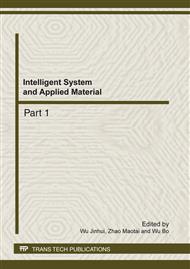p.3
p.8
p.13
p.17
p.23
p.27
p.31
p.36
Simple Preparation of Poly(3,4-ethylenedioxythiophene): Poly(styrenesulfonate) Modified Electrode for Application in Sensing and Biosensing Devices
Abstract:
Poly(3,4-ethylenedioxy-thiophene):polystyrenesulfonic acid (PEDOT:PSS), a commercially available aqueous conducting polymer, as the electrode modified material for the development of sensing and biosensing devices has not been widely reported due to its swelling and disintegration in aqueous solution. For this purpose, A poly(3,4-ethylenedioxythiophene): poly(styrenesulfonate) modified electrode was facilely fabricated for the electrochemical detection of catechol. 1-butyl-3-methylimidazolium hexafluorophosphate, one of hydrophobic ionic liquids, was used for secondary dopant and enhancer to improve the water-resistance and the electrochemical properties of PEDOT:PSS polymer film. The as-prepared PEDOT:PSS modified electrode exhibited the pronounced water-stability and good sensing performance, which make PEDOT:PSS as an interesting candidate of the electrode modified material for application in sensing and biosensing devices in the near future.
Info:
Periodical:
Pages:
17-22
Citation:
Online since:
February 2012
Authors:
Price:
Сopyright:
© 2012 Trans Tech Publications Ltd. All Rights Reserved
Share:
Citation:


